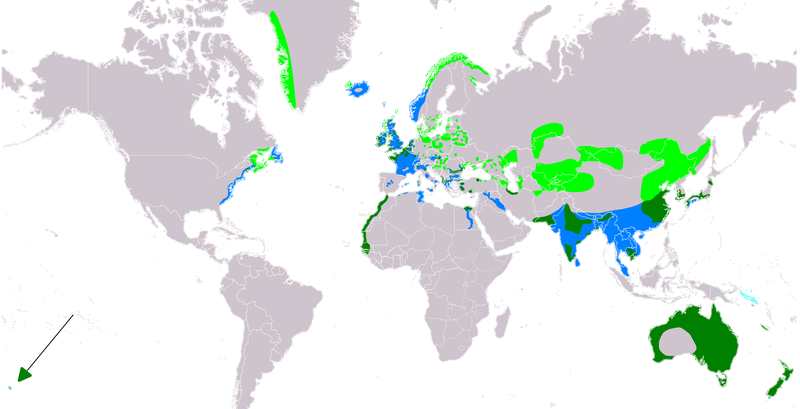CLICK ON PHOTO TO SEE HIGHER QUALITY IMAGE Click external link here for detailed species information Click external link here to see distribution map and to hear calls The Solitary Sandpiper (Tringa solitaria) is of the family Scolopacidae which is in the genus Tringa. This is a long distance migratory shorebird that breeds in the northern forests of Alaska, USA and Canada. It is also a very rare autumn passage vagrant to Western Europe. In mid autumn it moves south to spend the winter in Central and Southern America as well as the Caribbean.
This is the 2nd Co. Mayo Record and the 7 previous Irish Records are listed below:
- Co. Kerry - (juvenile) 21 to 22-09-1968 at Akeragh Lough
- Co. Cork - (juvenile) 05 to 07-09-1971 at Lissergriffin
- Co. Cork - (juvenile) 15 to 17-09-1974 in a flooded field near O'Driscoll's Castle, Cape Clear Island
- Co. Cork - (juvenile) 27 to 30-08-2008 flew over Lough Errul and then along the track at Central Bog, Cape Clear Island
- Co. Mayo - (juvenile) 22-09-2009 at Annagh Head and at Termoncarragh Lake
- Co. Wexford - (juvenile) 06 to 14-10-2014 at Duncormick, Rathangan and The Cull
- Co. Clare - (adult) 15 to 18-08-2016 at Cloghaun Lough, near Kilbaha
Patrick J. O'Keeffe / Raw Birds
Reference:
A List of Irish Birds, version 11.0 by Joe Hobbs (download pdf here)
Geographical distribution map of Solitary sandpiper
Breeding
Migration
winter
By Cephas - Solitary Sandpiper (Tringa solitaria), In Neotropical Birds Online (T. S. Schulenberg, Editor). Cornell Lab of Ornithology, Ithaca, NY, USA. retrieved from Neotropical Birds Online: https://neotropical.birds.cornell.edu/Species-Account/nb/species/solsan, CC BY-SA 4.0, https://commons.wikimedia.org/w/index.php?curid=69875049































